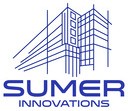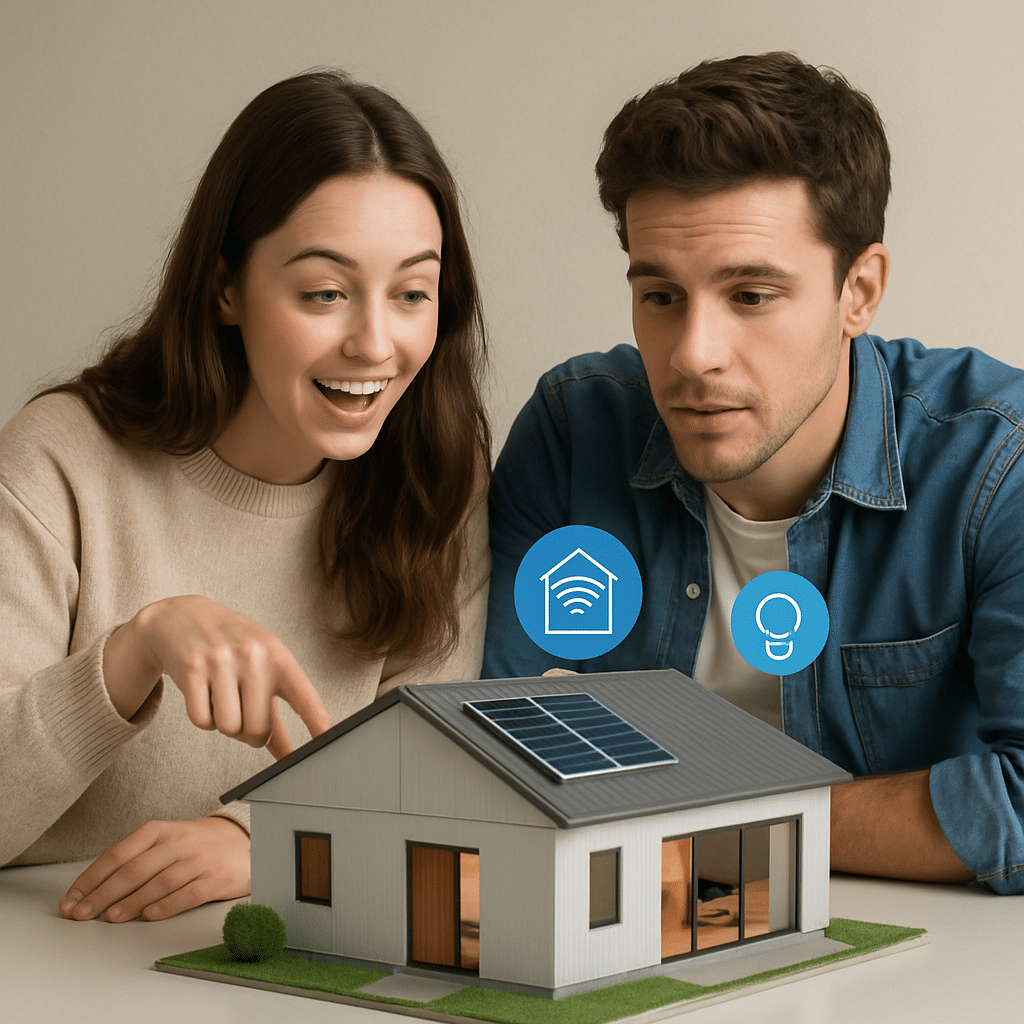Prefab smart homes are capturing the attention of Millennials and Gen Z. These homes offer a blend of technology, style, and sustainability.
Younger generations are drawn to the convenience of smart home technology. It simplifies daily life and reduces energy costs.
Modern prefab homes are designed with eco-friendly materials. They align with the environmental values of today’s youth.
The affordability and efficiency of prefab homes make them an attractive option. They provide a quicker path to homeownership.
As traditional builds face challenges, prefab smart homes emerge as a viable alternative. They promise a future of innovation and sustainability.
The Rise of Prefab Smart Homes Among Younger Generations
The appeal of prefab smart homes is growing rapidly among Millennials and Gen Z. Their lifestyle preferences differ significantly from previous generations. They prioritize efficiency, technology, and environmental consciousness.
Younger generations value smart home technology. These features increase convenience and align with their tech-savvy nature. They integrate well into their busy lives, providing automation and control.
Prefab smart homes offer a perfect solution for environmentally-conscious individuals. These homes are crafted with sustainability in mind. They use eco-friendly materials and minimize waste, resonating with green living advocates.
The benefits of prefab smart homes include:
- Quick construction times reducing wait periods.
- Integration of renewable energy sources.
- Potential cost savings through streamlined processes.
This growing trend reflects a shift in housing preferences. Younger buyers are leaning towards flexible, innovative, and modern housing solutions. Prefab smart homes embody these qualities and offer an alternative to traditional builds.
What Makes a Home “Smart” and “Prefab”?
A smart home uses technology to automate and enhance daily living. Features like automated lighting, climate control, and security systems are integral to smart home technology. These advancements provide convenience and energy savings, making life easier and more efficient.
Prefab homes, short for prefabricated homes, are constructed off-site in a controlled environment. They are then transported and assembled at the final location. This process allows for precision, reducing construction time and waste, while ensuring high-quality standards.
The combination of smart and prefab elements creates a unique living experience. Key features include:
- Automated home systems
- Energy-efficient appliances
- Modular construction
- Customizable designs
Prefab smart homes are highly adaptable, meeting diverse needs and preferences. The integration of modern technology with sustainable building practices results in homes that cater to both current and future demands. As a result, they are an ideal choice for those valuing innovation and environmental impact.
Key Benefits of Prefab Smart Homes for Millennials and Gen Z
Prefab smart homes present numerous advantages that appeal to younger generations. The combination of affordability and quick construction is attractive to those seeking immediate homeownership. With traditional builds, the wait can often be lengthy and expensive, but prefab homes reduce both time and cost significantly.
These homes offer a perfect blend of technology and style, which resonates with Millennials and Gen Z. Smart home technology brings daily conveniences that simplify routines and enhance leisure. Features like voice-activated assistants and automated systems align perfectly with a tech-savvy lifestyle.
Sustainability is another key benefit. Prefab smart homes minimize environmental impact through energy-efficient designs and eco-friendly materials. The reduced carbon footprint satisfies the growing demand for sustainable and ethical living solutions.
Customization options further enhance their appeal. Homebuyers can select designs that reflect their personal tastes and needs. This flexibility enables unique living spaces that adapt over time, matching lifestyle changes or family growth.
Key advantages include:
- Quicker and cost-effective construction
- Advanced smart home technology integration
- Eco-friendly and sustainable designs
- High customization potential
With these benefits, prefab smart homes offer a compelling alternative to traditional builds. They combine modern amenities, sustainability, and affordability, creating living spaces that are both functional and stylish.
Eco-Friendly Prefab: Sustainability and Green Living
Prefabricated smart homes have become synonymous with sustainable living. Increasingly, younger generations prioritize eco-friendly lifestyles, and prefab homes align with these values. These homes use sustainable materials and energy-efficient systems, significantly reducing their environmental impact.
Many prefab homes integrate renewable energy sources like solar panels, reducing reliance on non-renewable resources. This integration not only benefits the environment but also cuts energy costs, appealing to budget-conscious Millennials and Gen Z. Eco-friendly prefab homes provide a way to live sustainably without sacrificing comfort or style.
Another remarkable feature is the minimized construction waste. Factory-based production methods allow for resource optimization and less waste. This efficiency creates a smaller carbon footprint and supports sustainable development practices.
Sustainable elements include:
- Use of recycled materials
- Energy-efficient design
- Renewable energy sources
- Minimal construction waste
This approach to green living extends to smart home technology, offering features like energy monitoring systems. By choosing prefab smart homes, younger generations can contribute positively to the environment.
Modern Design and Customization: Expressing Individuality
Modern prefab homes offer endless possibilities for personalization. Younger generations love expressing their individuality, and these homes provide the perfect canvas. With a range of design options, Millennials and Gen Z can create spaces that reflect their unique styles.
Customization extends beyond aesthetics; it includes functional aspects too. Homeowners can choose layouts, materials, and smart features, ensuring the home meets their lifestyle needs. This flexibility allows for creativity while maintaining the benefits of prefab construction.
The sleek, contemporary design is another draw. Modern prefab homes often feature minimalist, clean lines, which appeal to those favoring simplicity. This style aligns with the current trend towards uncluttered, open living spaces.
Design and customization options include:
- Variety of architectural styles
- Selection of interior finishes
- Customizable smart home features
- Adaptive space planning
These elements combine to create a home that is not only functional but also a statement of personal taste.
Affordability and Efficiency: Making Homeownership Possible
For many young adults, buying a home seems daunting. Prefab smart homes offer an affordable alternative. By reducing construction costs and timelines, these homes make ownership more accessible for Millennials and Gen Z.
Efficiency plays a crucial role in affordability. Prefab methods streamline production, lowering expenses and reducing waste. This approach not only cuts costs but also speeds up the building process significantly. Homebuyers enjoy shorter wait times, making the dream of homeownership quicker to achieve.
Beyond initial savings, prefab homes continue to offer financial benefits. Energy-efficient designs and integrated smart technology lead to lower utility bills. In the long term, this contributes to significant savings.
Key features contributing to affordability and efficiency:
- Streamlined production processes
- Reduced labor and material costs
- Faster construction timelines
- Energy-efficient systems
These aspects combine to make prefab smart homes a practical choice for those seeking affordability without sacrificing quality.
Smart Home Technology: Convenience, Security, and Savings
Smart home technology is transforming how we live. For younger generations, convenience is key. Prefab smart homes integrate cutting-edge tech, making everyday tasks easier and more efficient.
Security is another major appeal. Prefab homes often come equipped with advanced security systems. Features like smart locks and surveillance cameras offer peace of mind, ensuring a safer living environment. These systems can be controlled remotely, adding an extra layer of protection.
Cost efficiency is also a big draw. Smart technology automates energy use, cutting down on waste and utility costs. Smart thermostats and lighting systems adjust automatically, optimizing settings for maximum savings.
Key advantages of smart home technology:
- Remote monitoring and control
- Automated energy management
- Enhanced security with smart devices
- Reduced utility expenses
Prefab smart homes capitalize on these innovations, appealing to tech-savvy buyers who value modern living.The Future of Housing: Trends and Innovations in Modular Smart Homes
Modular smart homes represent the next frontier in housing. They offer a combination of innovation and flexibility, appealing to forward-thinking individuals. These homes are designed for adaptability, meeting ever-evolving needs.
Emerging trends focus on sustainability and technology. Many modular homes now include renewable energy solutions. Features like solar panels and energy-efficient designs minimize environmental impact. This approach aligns with the growing demand for eco-friendly living.
Innovative technologies continue to redefine comfort and security. Voice-controlled systems and AI integration are becoming standard features. These advancements enhance living experiences by adding layers of convenience and personalization.
Major trends in modular smart homes include:
- Integration of renewable energy sources
- AI and voice control systems
- Emphasis on sustainable design
- Increased adaptability and customization
The future of housing is bright, with modular smart homes paving the way for a sustainable, tech-driven tomorrow.
Conclusion: Why Prefab Smart Homes Are the Smart Choice for the Next Generation
Prefab smart homes meet the needs of Millennials and Gen Z effortlessly. They offer a blend of modern style, sustainability, and cutting-edge technology. These attributes resonate with younger generations seeking meaningful living solutions.
As housing demands evolve, prefab smart homes offer a compelling alternative to traditional builds. They provide adaptability, eco-friendliness, and affordability, addressing key concerns for new homeowners. By embracing these innovative homes, the next generation can enjoy a future defined by comfort, security, and responsible living. Choosing prefab smart homes reflects a conscious decision towards a more sustainable and technologically advanced lifestyle, making them the smart choice for today’s discerning buyers.






